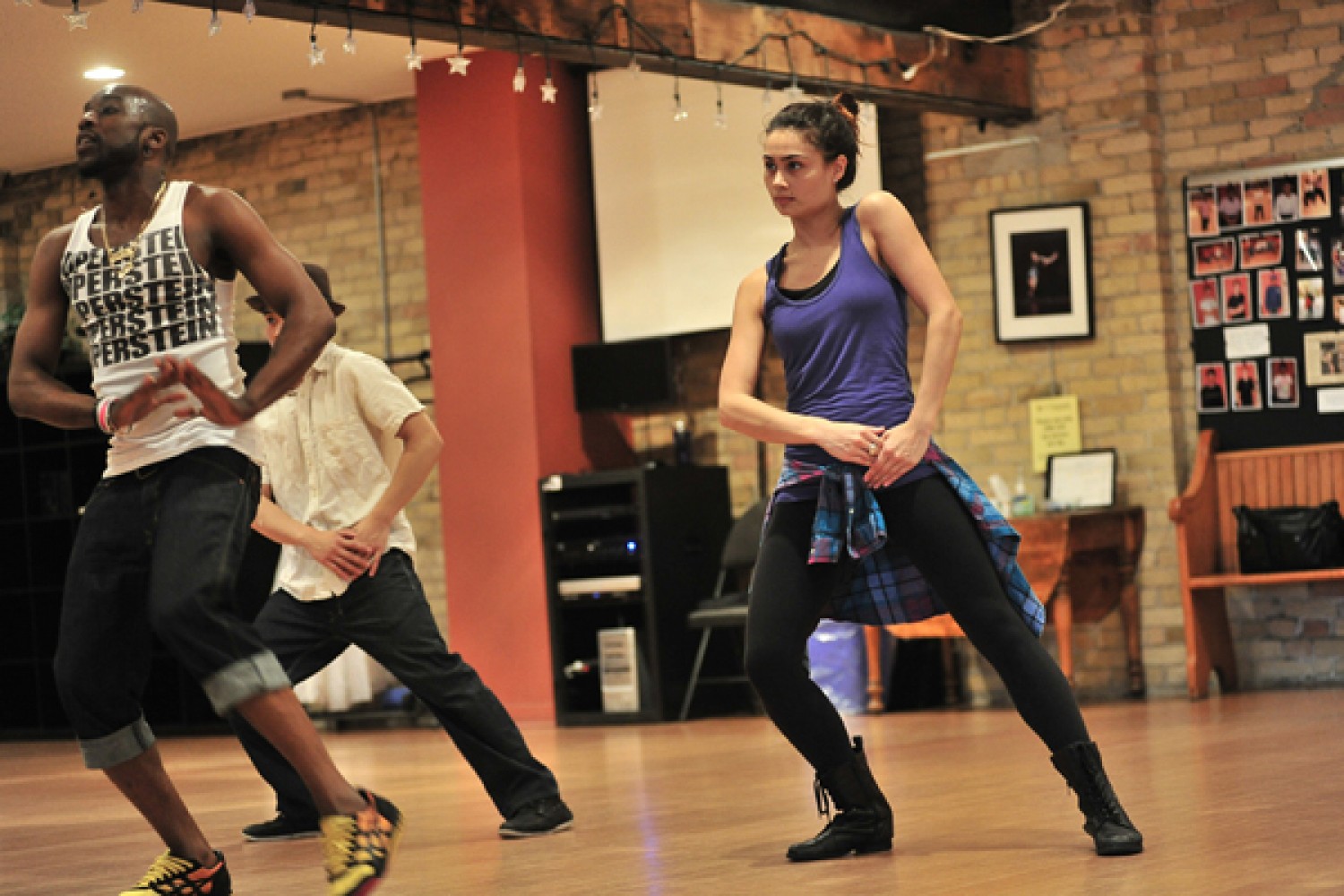Ballroom Troubleshooting: Part Three

Welcome back for our final(?) article in the ballroom troubleshooting series! Most beginner dancers have encountered at least one of the previous challenges. This time however, we’re looking at some issues that dancers with a little more experience might face.
1. ‘I can’t get around my partner on reverse/natural turns.’
The issue: You find yourself taking huge steps to get past your partner. Often you under-turn, taking you off your line of dance.
What to do about it: The easy fix is to make sure your partner takes smaller steps when you travel around them, and vice versa when it’s your turn. Picture yourself and your partner like the rim and the hub of a wheel respectively; the rim must always travel more to get around than the hub. The more permanent solution is to begin rotating your body a step before you move past. This shifts your partner out of the way, allowing you to pass through the space they occupied and get to the final position directly. When it’s their turn, think of stepping backwards and just off their track, so they barely miss you.
2. ‘I overbalance on my rise and fall.’
The issue: The rising and falling action makes you feel like you’re rolling off your feet.
What to do about it: First, make sure your knees don’t fully straighten – the rise happens primarily by pointing the toes and stretching the spine. Next, practice your rise and fall in place, aiming for smooth, continuous movement – rising too quickly can make you ‘tip over’. Finally, on the fall, lead with your leg before you shift your weight. Your core should initially lower in place, like the downward part of a rollercoaster.
3. ‘The lead to a promenade position makes my partner’s shoulder pop forward.’
The issue: When you shift to promenade, your partner’s left side gets pulled towards you, which breaks their frame.
What to do about it: A common misconception is that the lead to promenade is a rotating action, when actually it’s a pulling action. Imagine you are holding a bow, with your right hand on the string. To shift your partner to promenade, you must pull back on the bowstring, which means extending your right elbow slightly further rightwards. This should ‘open’ your partner, while still keeping space between you.
4. ‘The music is too fast for me to keep up my footwork!’
The issue: It feels too fast, and it feels like work.
What to do about it: Assuming it’s actually ballroom music, the first possibility is you need to shorten your steps. Faster Latin/rhythm dances, like east coast swing or mambo, take much smaller steps than say, a tango. Check your weight transfers using the suggestions in #1 from this article. You might also want to go over the step slowly to check places where you lose momentum. Finally, you might just need to keep practicing! Many steps will feel insanely fast at first, until you grow familiar enough to dance them efficiently.
5. ‘I can’t seem to get into outside partner position.’
The issue: Your partner seems stuck in front of you. The only way you can shift them sideways is by manhandling them with your arms.
What to do about it: You most likely need to work on your contra body movement, which is a fancy way of saying ‘face one way, but travel another way’. Your belly button is a searchlight that tells your partner where to be. That means you need to rotate your torso if you want to position them on the appropriate side. Alternatively, you can keep your torso forward, but step diagonally right or left to create the same effect. If you get tightness in your lower back, stretch it out before you practice.
About the Author
Ian Crewe has been dancing ballroom for over 18 years, and has a Licentiate in American smooth and rhythm. His passion for dance and his endless seeking for ways to reach new audiences eventually led him to blogging and the World Wide Web. Ian currently teaches at the Joy of Dance Centre, Toronto, ON, Canada.

